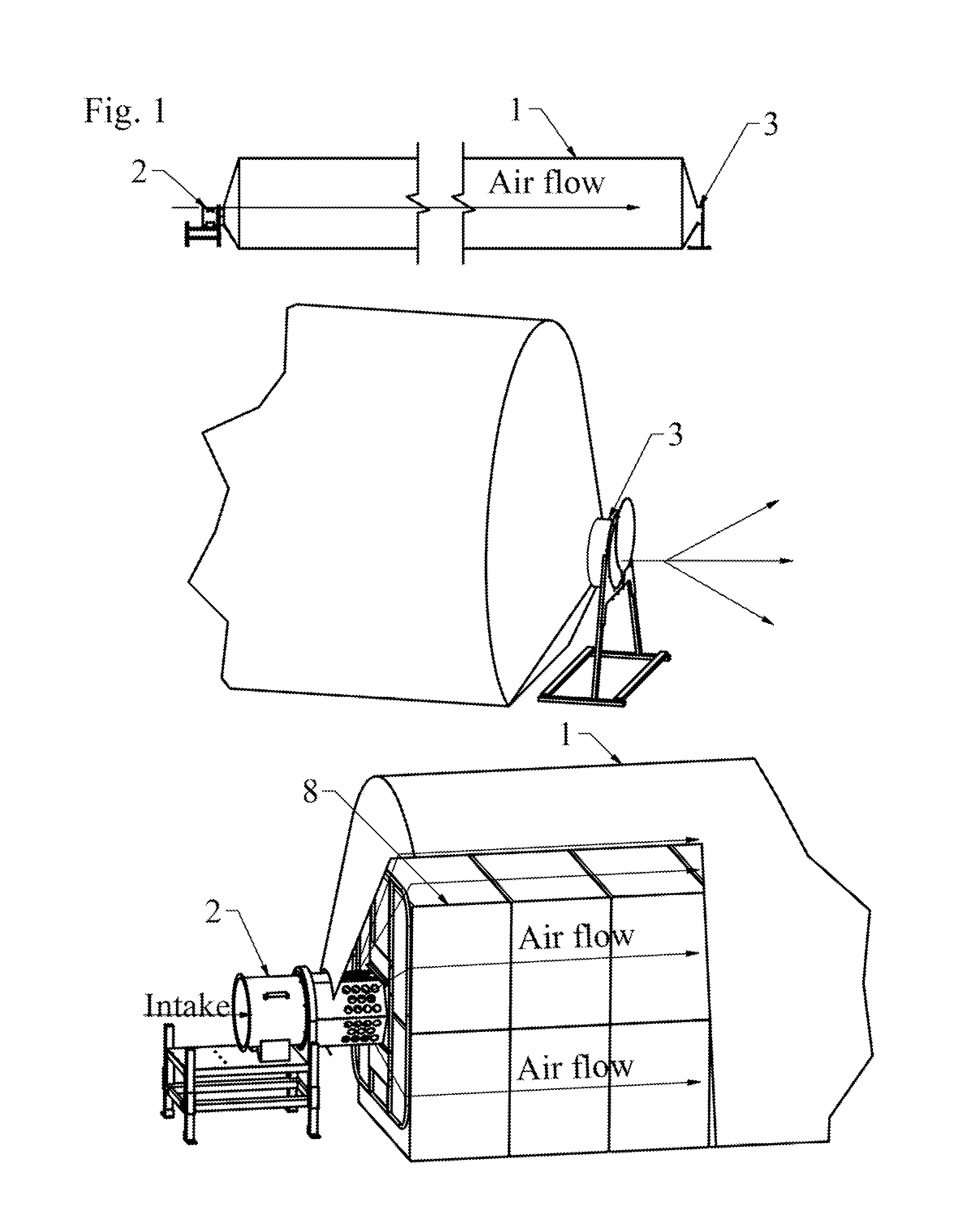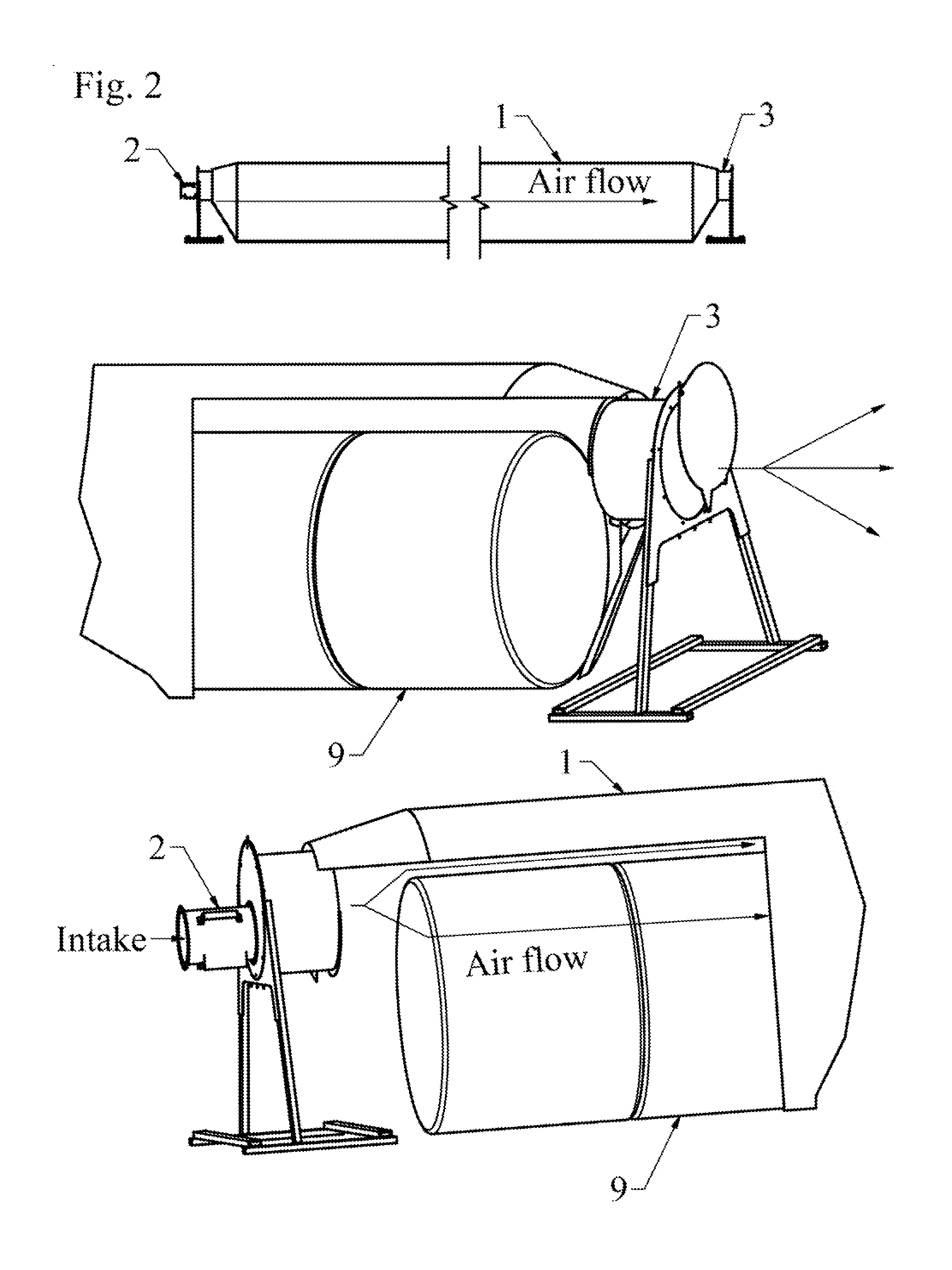Hay Storage System
a technology for storage systems and hay, which is applied in the field of hay storage systems, can solve the problems of reducing the nutrient, caloric and saleable value of baled crops, and reducing the environmental degradation of baled crops. , to achieve the effect of preventing undesired heat buildup or mold growth, and maximizing the curing of materials
- Summary
- Abstract
- Description
- Claims
- Application Information
AI Technical Summary
Benefits of technology
Problems solved by technology
Method used
Image
Examples
Embodiment Construction
[0029]See FIG. 1. In one embodiment, a substantially waterproof container bag 1 typically fabricated from any group of extruded or cast plastic or water-resistant or coated paper or reinforced films, and of various different diameters dependent upon the size of bale or configuration, and cross section of bundles to be stored, is positioned in a generally horizontal position, typically rolled up to a substantially compact configuration, with total length of a few feet extending outward, however the bag may be totally or partially unrolled. The preferred method is to only unroll and extend sufficient length of bags to extend over the next hale or group of bundles in a single load. Finished unrolled lengths of these bags can vary from a few feet to up to several hundred feet long. This bag 1 is used to create a controlled environment for thy hay curing, drying and storage.
[0030]A fan, compressor, gas supply or other mechanical air injection means and support structure 2 is preferably s...
PUM
 Login to View More
Login to View More Abstract
Description
Claims
Application Information
 Login to View More
Login to View More - R&D
- Intellectual Property
- Life Sciences
- Materials
- Tech Scout
- Unparalleled Data Quality
- Higher Quality Content
- 60% Fewer Hallucinations
Browse by: Latest US Patents, China's latest patents, Technical Efficacy Thesaurus, Application Domain, Technology Topic, Popular Technical Reports.
© 2025 PatSnap. All rights reserved.Legal|Privacy policy|Modern Slavery Act Transparency Statement|Sitemap|About US| Contact US: help@patsnap.com



